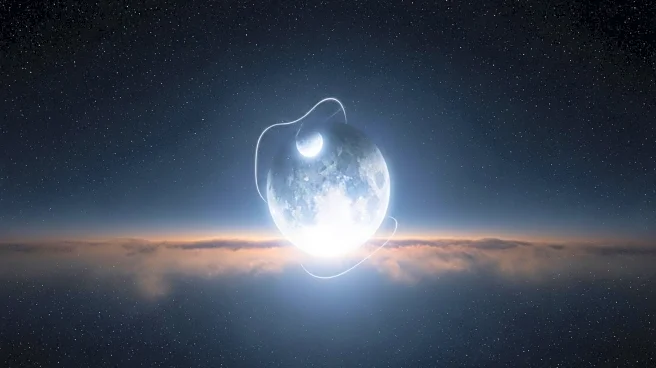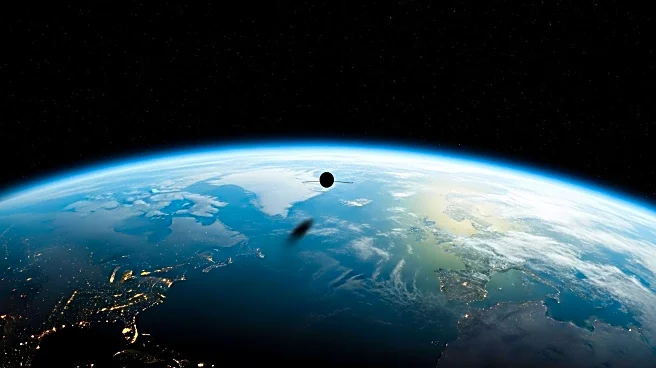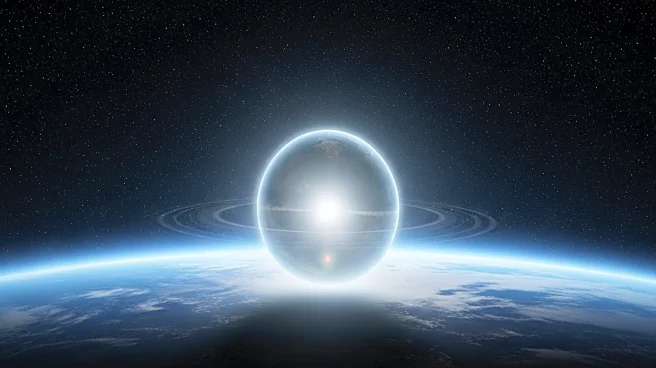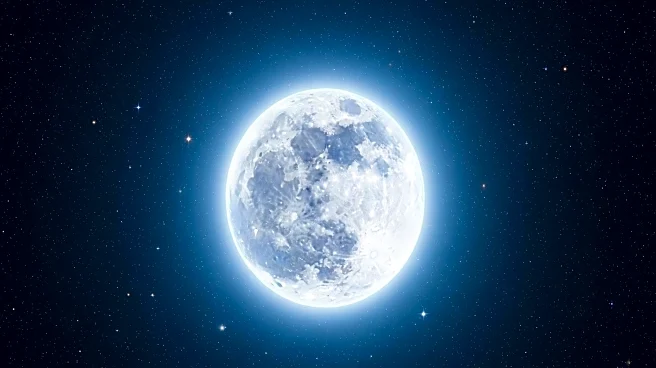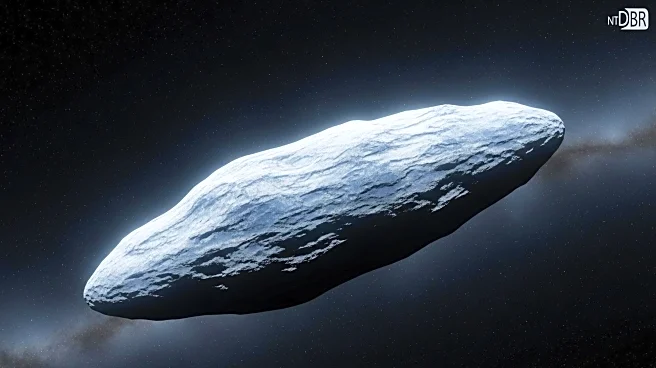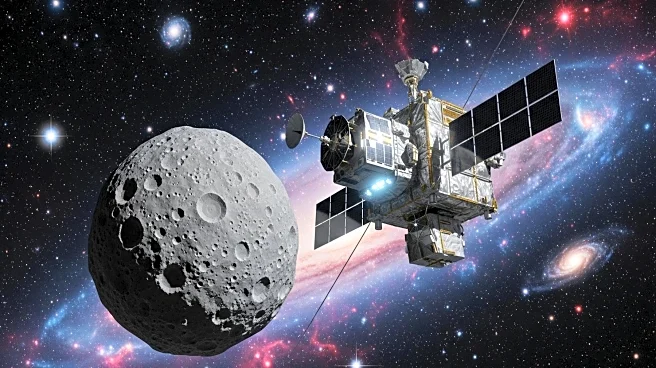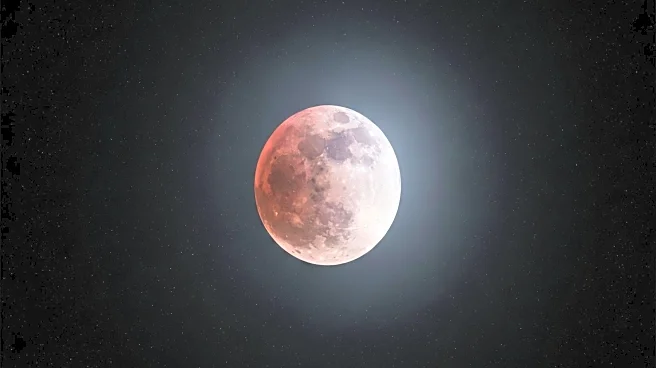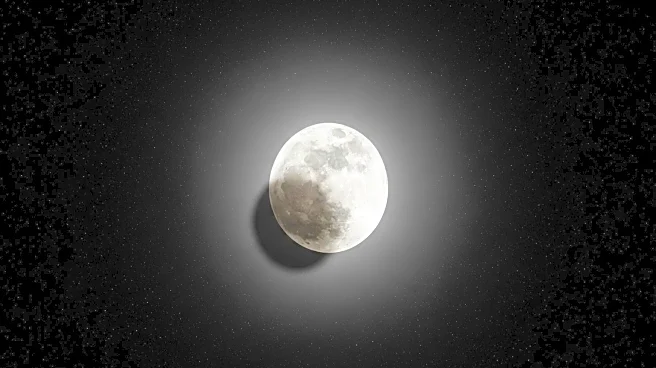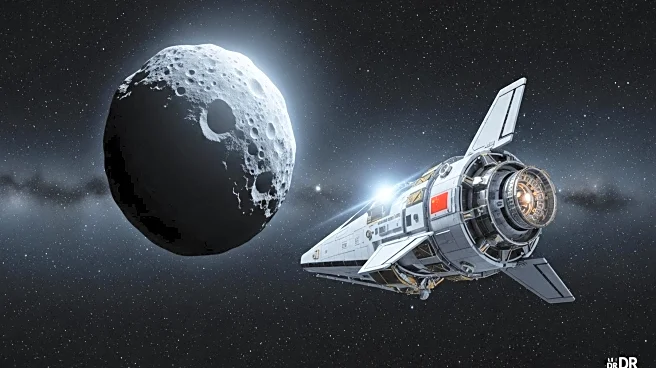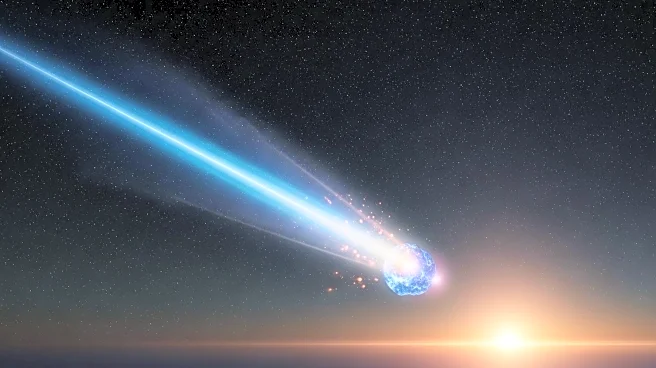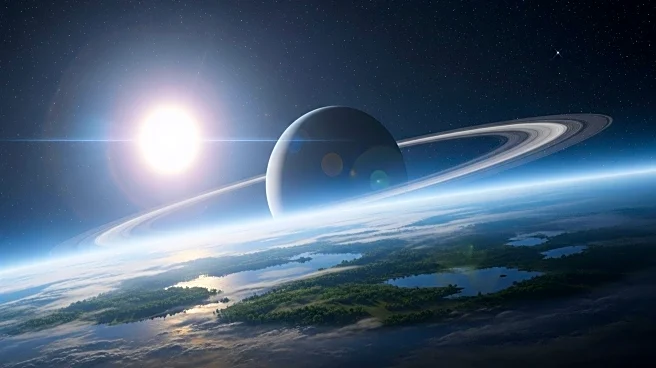What's Happening?
Astronomers at the Pan-STARRS observatory in Hawaii have discovered a new quasi-moon, named 2025 PN7, which has been in a quasi-orbit with Earth for approximately 60 years. This discovery adds to the list of known quasi-moons, which are small asteroids that resonate with Earth's orbit but do not technically orbit the planet. The research, published in Research Notes of the AAS, utilized JPL's Horizons system and Python tools to analyze orbital data. The quasi-moon is expected to remain near Earth for another 60 years before departing, a relatively short period compared to other quasi-moons like Kamo'oalewa, which has a near-Earth orbit of around 381 years.
Why It's Important?
The discovery of 2025 PN7 highlights the dynamic nature of Earth's orbital environment and the presence of quasi-moons, which could have implications for planetary defense and future space missions. Understanding these near-Earth objects is crucial for assessing potential threats and opportunities for asteroid mining. The study of quasi-moons also contributes to the broader understanding of the Arjuna asteroid belt, which occupies the region where the Earth-moon system orbits the sun. This research underscores the importance of continued observation and analysis of near-Earth objects.
What's Next?
Future research may uncover additional quasi-satellites or mini-moons, enhancing our understanding of Earth's orbital companions. Tracking these objects is vital for planetary defense strategies and could inform future space exploration missions. Scientists will continue to monitor 2025 PN7 and other quasi-moons to assess their trajectories and potential impacts on Earth. The ongoing study of these objects may also lead to advancements in asteroid mining technologies and strategies.
Beyond the Headlines
The distinction between mini-moons and quasi-moons raises interesting questions about the classification and behavior of near-Earth objects. While mini-moons temporarily orbit Earth, quasi-moons only appear to do so, offering insights into the gravitational dynamics of the Earth-moon system. This research may also influence future discussions on space policy and the management of near-Earth objects, as well as ethical considerations regarding asteroid mining.
